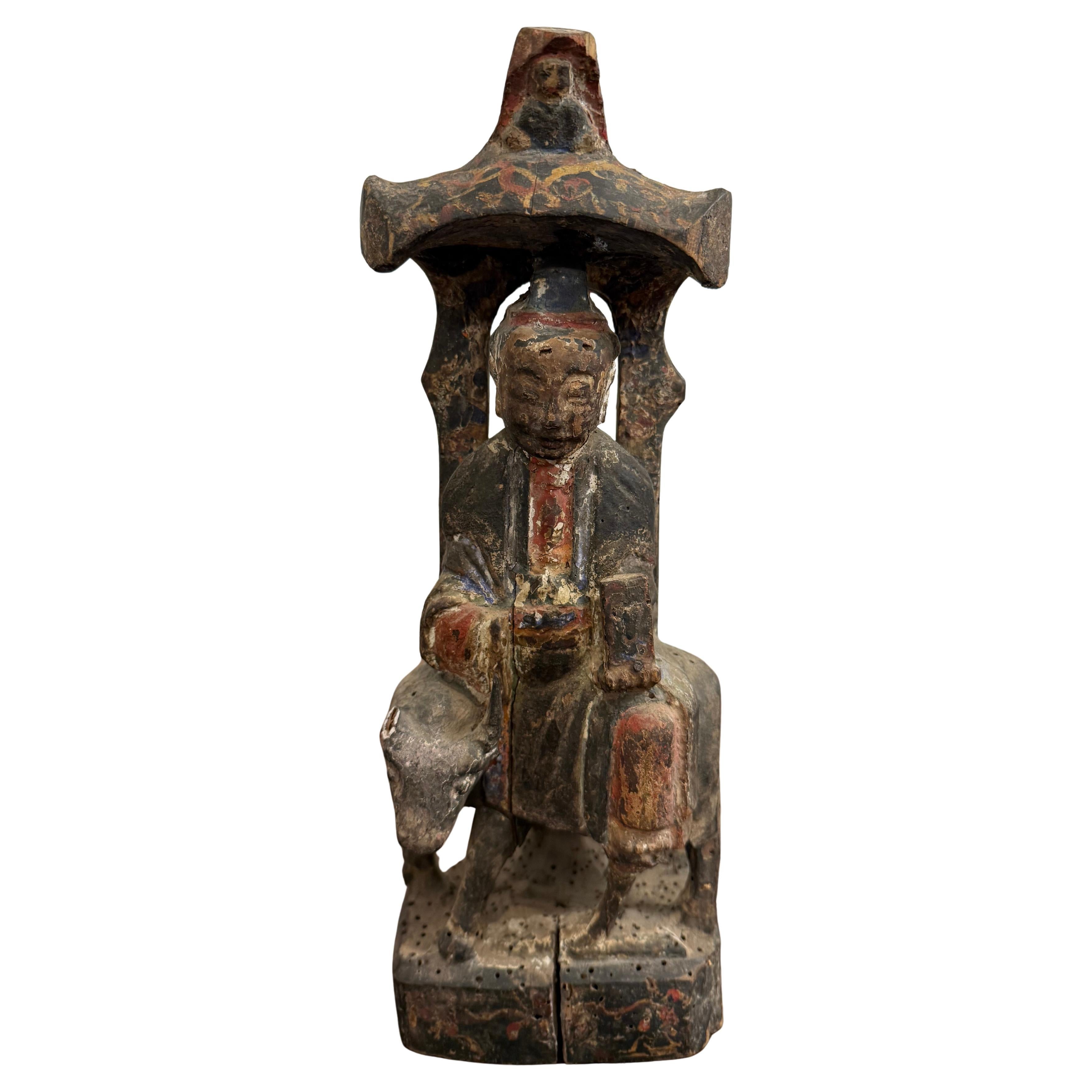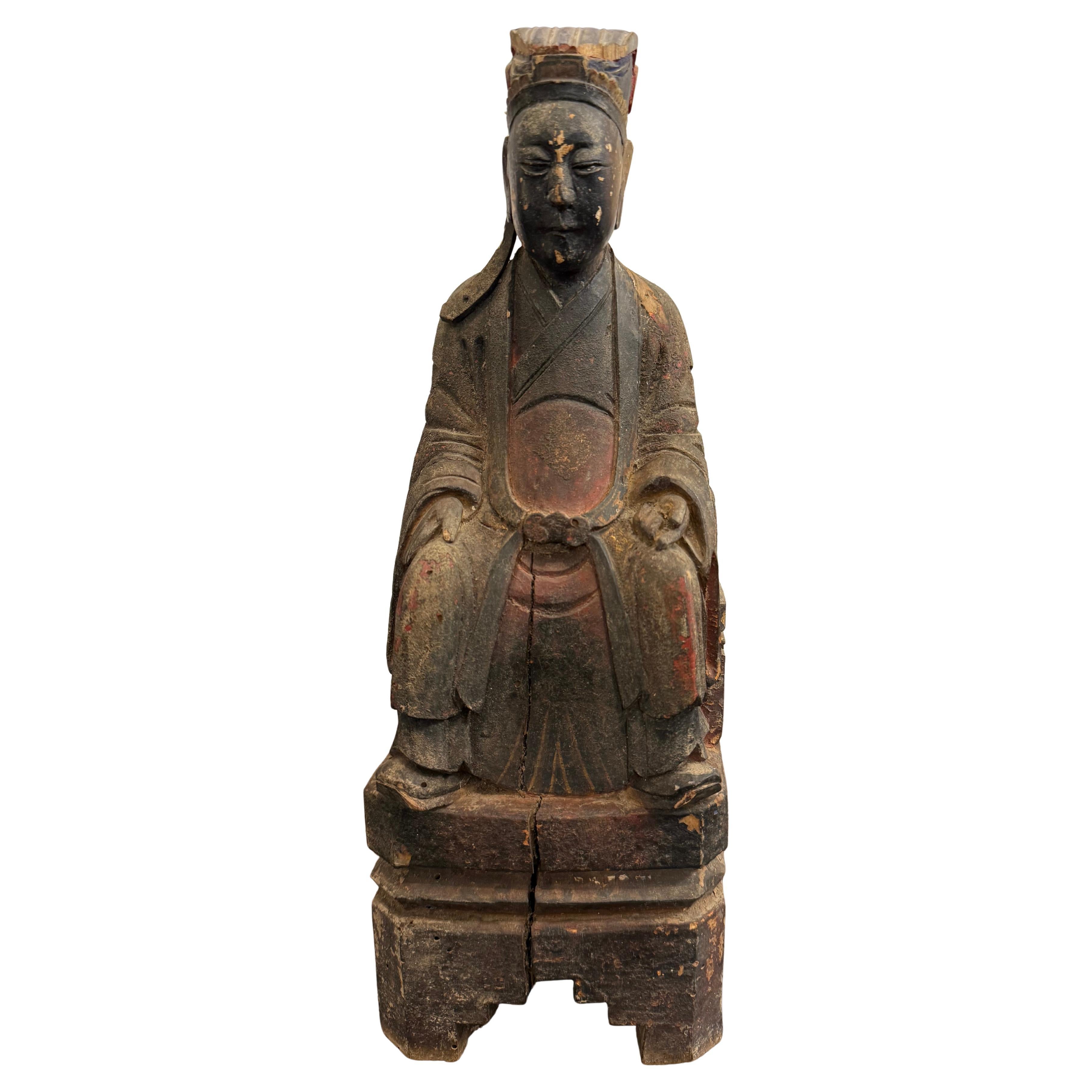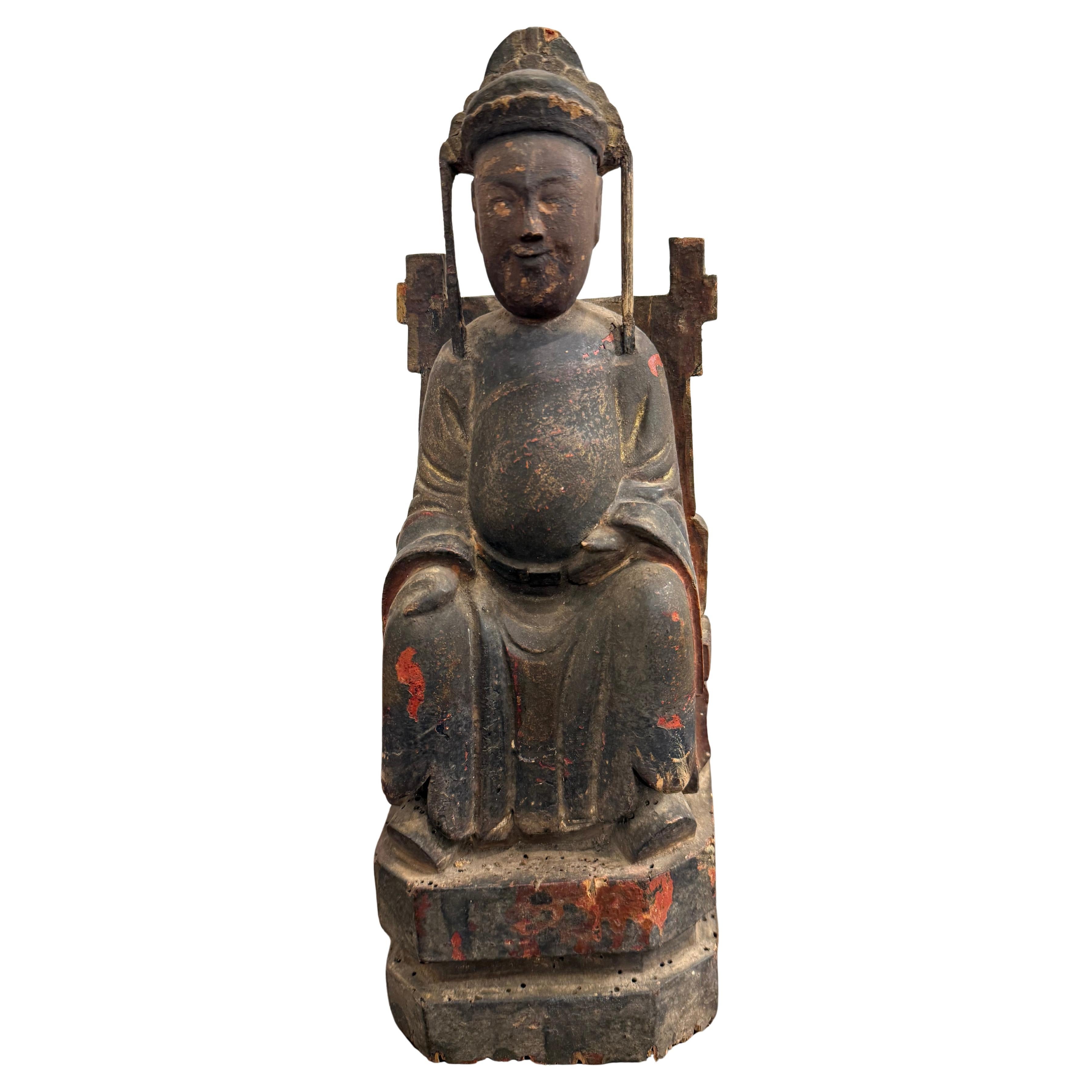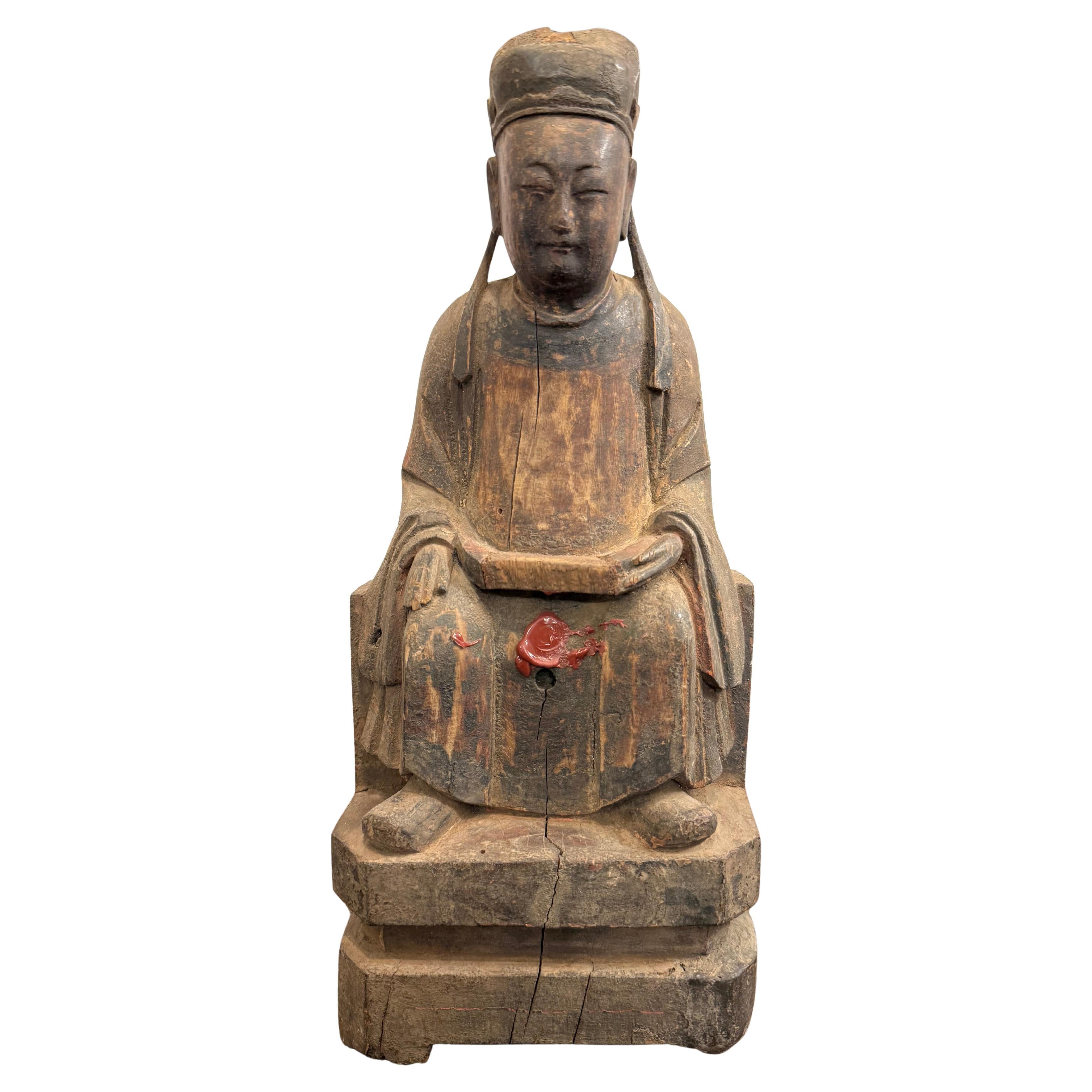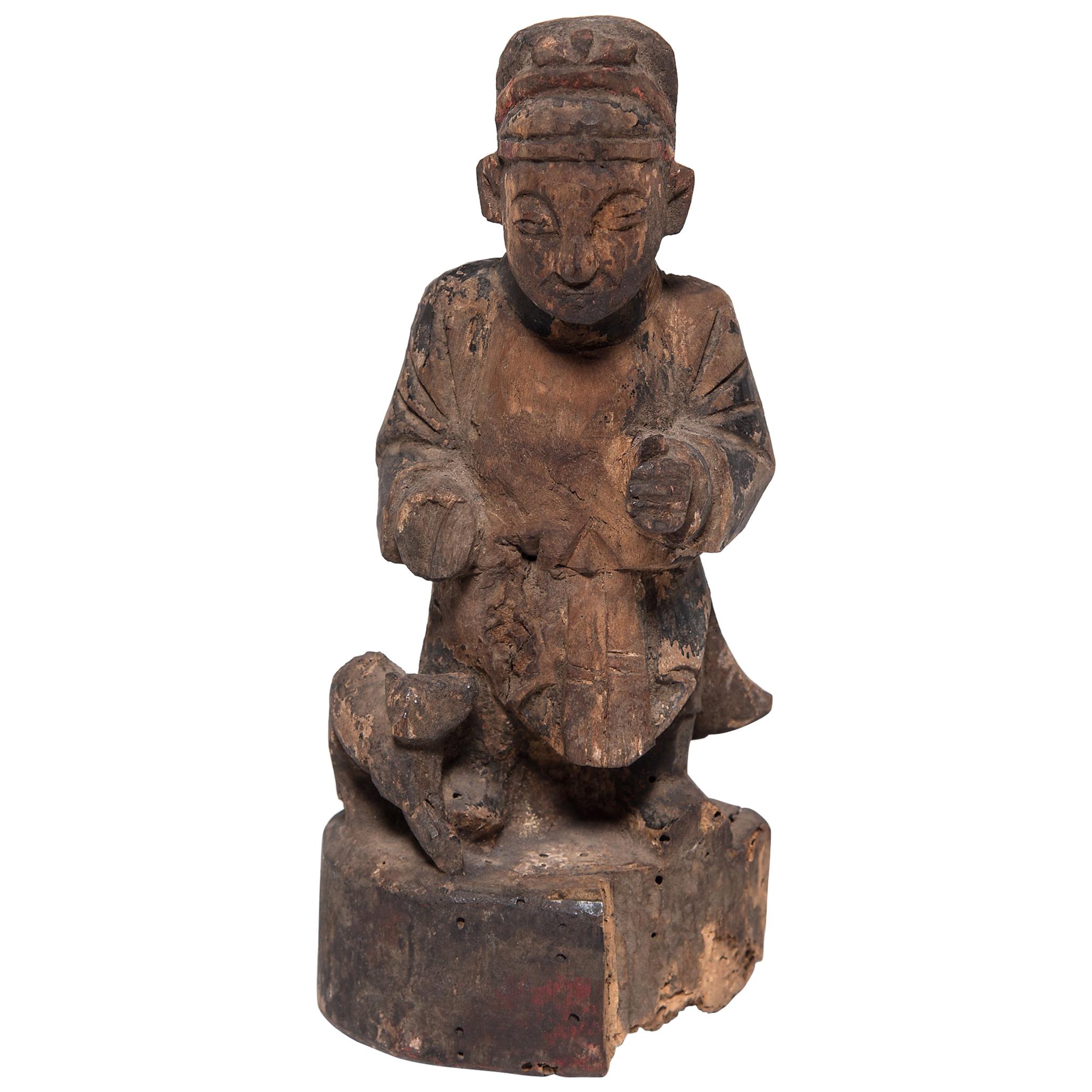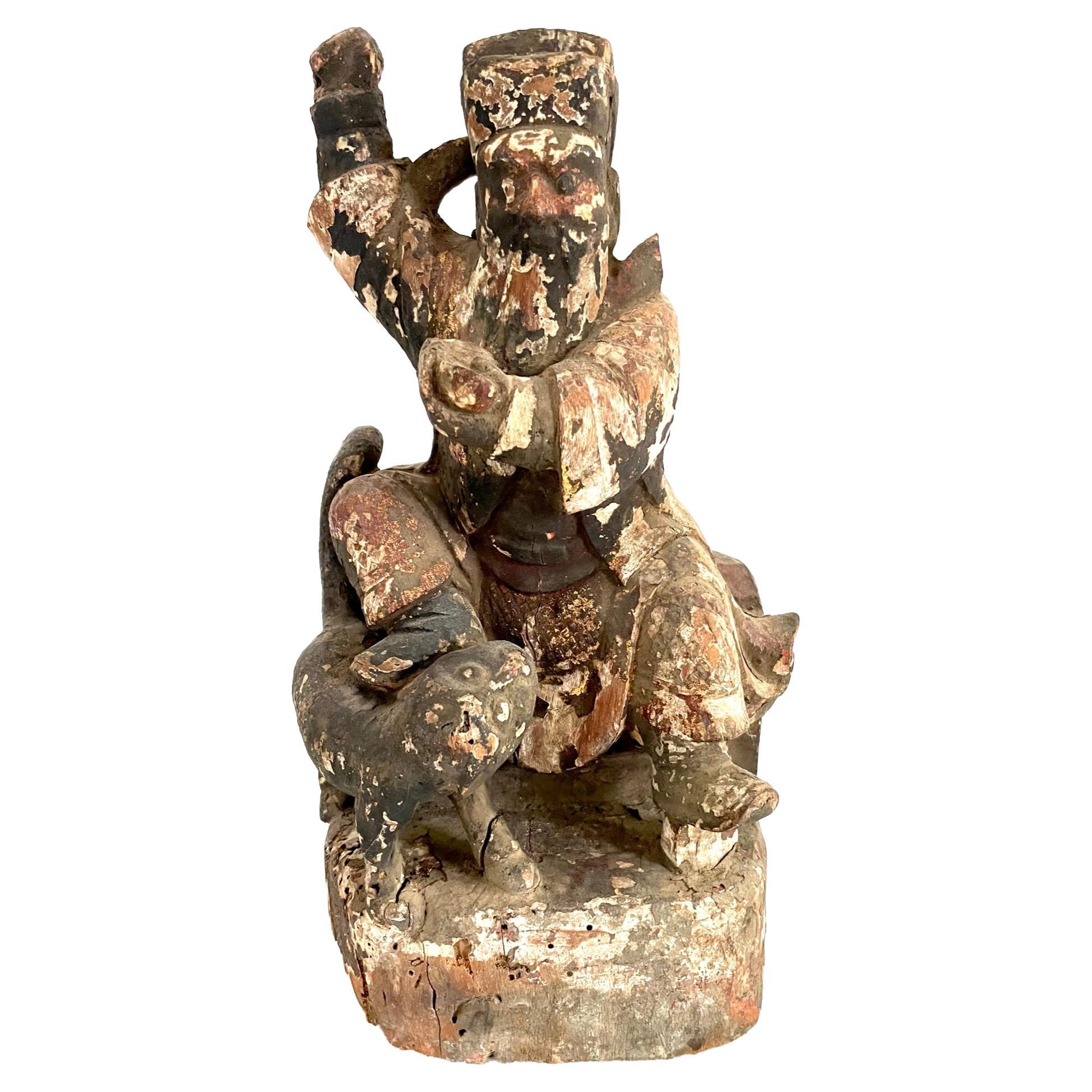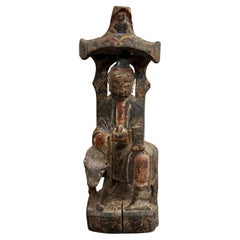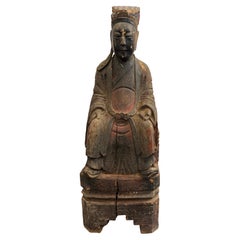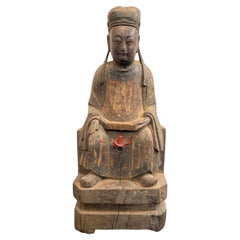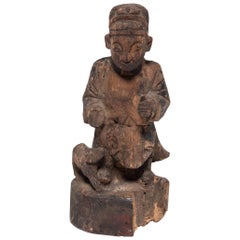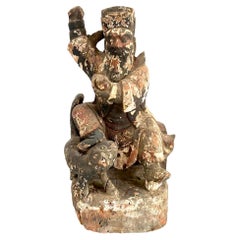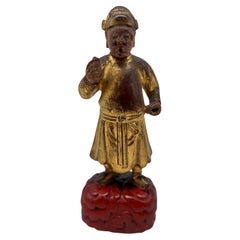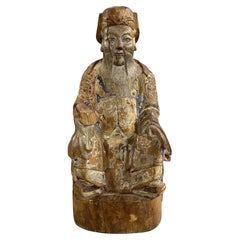Items Similar to A Small Chinese Carved Timber Gilt and Polychrome Figure, Ming Dynasty
Video Loading
Want more images or videos?
Request additional images or videos from the seller
1 of 12
A Small Chinese Carved Timber Gilt and Polychrome Figure, Ming Dynasty
$560
$1,40060% Off
£423.29
£1,058.2360% Off
€486.44
€1,216.0960% Off
CA$779.80
CA$1,949.4960% Off
A$867.49
A$2,168.7360% Off
CHF 454.75
CHF 1,136.8860% Off
MX$10,600.54
MX$26,501.3460% Off
NOK 5,790.67
NOK 14,476.6960% Off
SEK 5,451.12
SEK 13,627.8060% Off
DKK 3,631.06
DKK 9,077.6560% Off
Shipping
Retrieving quote...The 1stDibs Promise:
Authenticity Guarantee,
Money-Back Guarantee,
24-Hour Cancellation
About the Item
A Small Chinese Carved Timber Gilt and Polychrome Figure, Ming Dynasty
Provenance: Private Old Australian Collection Acquired in Beijing Market in 1980s.
Description:
The cavity in the back identifying the group as a devotional statue, representing a richly adorned figure, likely a woman, riding an ox, often included as a symbolic depiction of having achieved divine control of the mind over the body, or otherworldly carelessness. The figure possessing a headdress with remnants of gilt and vermillion application, their robes rendered with the same vermillion and additional green hues and spilling forth upon the ox, the whole raised on a carved integral base. Home decor, interior design and collectibles.
Dimensions:
Height: 36cm
Width: 13cm
Depth: 8cm
- Dimensions:Height: 14.18 in (36 cm)Width: 5.12 in (13 cm)Depth: 3.15 in (8 cm)
- Style:Ming (Of the Period)
- Materials and Techniques:
- Place of Origin:
- Period:
- Date of Manufacture:1600s
- Condition:Wear consistent with age and use. Minor losses. Minor structural damages. Minor fading.
- Seller Location:ARMADALE, AU
- Reference Number:Seller: GS362 CP/MUBL1stDibs: LU8952244578002
About the Seller
5.0
Gold Seller
Premium sellers maintaining a 4.3+ rating and 24-hour response times
Established in 2012
1stDibs seller since 2023
12 sales on 1stDibs
Typical response time: 4 hours
Associations
International Confederation of Art and Antique Dealers' Associations
- ShippingRetrieving quote...Shipping from: ARMADALE, Australia
- Return Policy
Authenticity Guarantee
In the unlikely event there’s an issue with an item’s authenticity, contact us within 1 year for a full refund. DetailsMoney-Back Guarantee
If your item is not as described, is damaged in transit, or does not arrive, contact us within 7 days for a full refund. Details24-Hour Cancellation
You have a 24-hour grace period in which to reconsider your purchase, with no questions asked.Vetted Professional Sellers
Our world-class sellers must adhere to strict standards for service and quality, maintaining the integrity of our listings.Price-Match Guarantee
If you find that a seller listed the same item for a lower price elsewhere, we’ll match it.Trusted Global Delivery
Our best-in-class carrier network provides specialized shipping options worldwide, including custom delivery.More From This Seller
View AllA Small Chinese Carved Timber Polychrome Figure, Ming Dynasty
Located in ARMADALE, VIC
A Small Chinese Carved Timber Polychrome Figure, Ming Dynasty
Provenance:
Private Australian Collection Acquired in the Beijing Market in 1980s.
Description:
The cavity in the ba...
Category
Antique 17th Century Chinese Ming Sculptures and Carvings
Materials
Wood
A Small Chinese Carved Timber Polychrome Figure, Ming Dynasty
Located in ARMADALE, VIC
A Small Chinese Carved Timber Polychrome Figure, Ming Dynasty
Provenance: Private Old Australian Collection Acquired in Beijing Market in 1980s.
Description:
The cavity in the back...
Category
Antique 17th Century Chinese Ming Sculptures and Carvings
Materials
Wood
A Small Chinese Carved Timber Gilt and Polychrome Figure, Ming Dynasty
Located in ARMADALE, VIC
A Small Chinese Carved Timber Gilt and Polychrome Figure, Ming Dynasty
Provenance:
Private Old Australian Collection Acquired in Beijing Market in 1980s.
Description:
The cavity ...
Category
Antique 17th Century Chinese Ming Sculptures and Carvings
Materials
Wood
$675 Sale Price
50% Off
Free Shipping
A Small Chinese Carved Timber Gilt and Polychrome Figure, Ming Dynasty
Located in ARMADALE, VIC
A Small Chinese Carved Timber Gilt and Polychrome Figure, Ming Dynasty
Provenance: Private Old Australian Collection Acquired in Beijing Market in 1980s.
Description:
A devotional...
Category
Antique 17th Century Chinese Ming Sculptures and Carvings
Materials
Wood
$605 Sale Price
50% Off
Free Shipping
An Important Chinese Carved Wood Figure of Guanyin, Ming Dynasty, 17th Century
Located in ARMADALE, VIC
An Important Chinese Carved Wood Figure of Guanyin, Ming Dynasty, 17th Century
Description:
A dignified portrayal of the bodhisattva, respl...
Category
Antique 17th Century Chinese Ming Sculptures and Carvings
Materials
Wood
A Large Chinese Carved Wood Figure of Guanyin, Late Qing Dynasty
Located in ARMADALE, VIC
An impressive depiction of Guanyin, the Bodhisattva of compassion, whose name bears the meaning ‘One who hears the cries of the world.’ The rather androgynous figure is adorned with beaded jewellery and the princely regalia of a dhoti, draped across her body and spilling out over to partially obscure what she is resting upon. The goddess’ profile exhibits idealised features of Asian artistic convention; her face is soft and rounded, with full lips and relaxed eyes that provide a serene quality of youthfulness to the figure. Adhering to Chinese iconography of Guanyin, the figure is marked by an urna on her forehead, denoting her own enlightenment, as well as a diadem displaying Buddha Amitabha, the spiritual teacher of Guanyin. Seated in the Lalit asana pose, translated as ‘royal ease’, the figure exudes a fine example of the relaxed majesty typical in the characterisation of Guanyin. Whilst the figure’s left hand is placed restfully upon the left leg pendant, the right is raised in the gesture shuni mudra, the second finger held gently against the thumb. Otherwise known as the seal of patience, this gesture indicates the figure as one intended to bestow this virtue, along with compassion and understanding, upon the beholder.
Notes on the item:
Guanyin is the Chinese interpretation of Avalokiteshvara, the Indian Bodhisattva of compassion. The term “Bodhisattva” is derived from the Sanskrit “Bodhi”, meaning ‘awakening’ or ‘enlightenment’, combined with “Sattva”, meaning ‘spirit’ or ‘being’, referring to one on the path to achieving enlightenment. Bodhisattvas in Mayahana Buddhism are recognised as figures who have effectively achieved enlightenment yet relinquish their accension to nirvana in order to remain amongst mankind in the ultimate act of compassion to aid as spiritual guides. As such, the Bodhisattva inhabit a liminal space between samsara and nirvana; enlightened beings that maintain a relationship with humanity that buddhas cannot, as attaining Buddhahood necessitates the abandonment of all worldly attachments, including mankind. Guanyin’s very name, ‘One who hears the cries of the world’ highlights this role as a compassionate figure who acknowledges the suffering and strife of man. Along with Mahāsthāmaprāpta, a fellow bodhisattva, Guanyin serves as an attendant to Buddha Amitabha, with these three deities recognised as the Three Sages of Western Pure Land Buddhism, a sect of Mayahana Buddhism popular in East Asia.
Avalokiteshvara is commonly posited to have been adopted from Indian Buddhism into China as Guanyin around 200-400 CE, however it was the Tang dynasty (618-907) which saw the popularisation of the deity. By the Ming (1358–1644) and Qing (1644–1911) dynasties, Guanyin held the position as the most popular female deity in China. The unique state of religion in China held no monolithic canon regarding Buddhism and saw the assimilation of several belief systems, primarily Daoism, Buddhism and Confucianism. Consequently, Guanyin became a deity to be revered beyond Buddhism alone, appointed as both an official imperial deity and Daoist deity in the 12th century. Guanyin may also be seen to fulfil the role of idealised femininity as prescribed by Confucianism, with the scarcity of female Chinese deities perhaps accounting for the gradual gender shift Guanyin underwent.
The Indian Avalokiteshvara is unequivocally recognised as male, whilst the supposed gender of Guanyin remains contentious. Although there is a clear shift from the masculine Avalokiteshvara towards a more feminine representation, it is unclear if Guanyin is understood to be entirely feminine, to inhabit qualities of both genders or to be elevated beyond gender entirely, embodying neither. Depictions of Guanyin are highly androgynous, which some believe lends credence towards Guanyin symbolising the unity of dualistic forces as recognised in Daoism, displaying the anthropomorphism of yin and yang.
Comparative Analysis:
Market comparisons of similar Qing Dynasty polychrome figures of Guanyin include lot 767 (no.2) From Christies ‘Important Chinese Ceramics and Works of Art,’ New York, 25 March 2022, with the price realised USD 52,920 (Estimate USD 20,000 – USD 30,000). Christies also auctioned a comparable polychrome Guanyin...
Category
Antique Late 19th Century Chinese Qing Sculptures and Carvings
Materials
Hardwood
You May Also Like
Chinese Carved Ancestor Figure, c. 1800
Located in Chicago, IL
Ancestor worship was an integral part of traditional Chinese home life. This carved figure bears the likeness of one of its original owner's important for...
Category
Antique Early 19th Century Chinese Primitive Figurative Sculptures
Materials
Wood
19th Century Chinese Carved Wooden Altar God
Located in Atlanta, GA
This Ching Dynasty carved polychrome seated Taoist altar god was once used on the family altar to honor their ancestors. Ancestor worship plays a major role in Chinese religion. This...
Category
Antique Early 19th Century Sculptures and Carvings
Materials
Wood, Paint
Antique Chinese Carved Gilt Wood & Polychrome Decorated Figure
Located in Atlanta, GA
This exquisite antique Chinese figure, carved from wood and adorned with gilding and polychrome decoration, showcases the exceptional artistry of traditional Chinese craftsmanship. L...
Category
Antique 19th Century Chinese Chinese Export Sculptures and Carvings
Materials
Giltwood
$1,200 Sale Price
20% Off
19th Century Chinese Carved Polychrome Wooden Ancestral Figure Sculpture
Located in Milford, NH
A fine hand carved polychrome wooden seated Chinese ancestral figure sculpture, dating to the 19th century, with deep back cutouts, some paint losses, shrinkage cracks, edge losses, ...
Category
Antique 19th Century Chinese Sculptures and Carvings
Materials
Hardwood
18th Century Chinese Carved Wooden Alter God
Located in Atlanta, GA
This Chinese carved polychrome seated altar god was once used on the family altar to honor their ancestors. Ancestor worship plays a major role in Chinese religion. This beautifully...
Category
Antique Late 18th Century Chinese Sculptures and Carvings
Materials
Wood
Antique Indonesian Hand-Carved and Hand-Painted Temple Statue, 20th Century
Located in Yonkers, NY
An antique temple statue carved and hand-painted in Indonesia in the early 20th century. This wooden statue shows an Indonesian dancing character. His d...
Category
Early 20th Century Indonesian Sculptures and Carvings
Materials
Wood
More Ways To Browse
Gilt Polychrome
Antique Remnant
Antique Headdress
Polychrome Carved Sculpture
Polychrome Wood Carving
Polychrome Statue
Ox Antique
Ming Dynasty Sculpture
Chinese Wood Statue
Polychrome Wood Statue
Carved Woman Statue
Ming Figure
Chinese Ox
Chinese Polychrome Carved Wood
Chinese Gilt Wood Carving
Asian Green Statues
Chinese Headdress
Chinese Carving Polychrome
